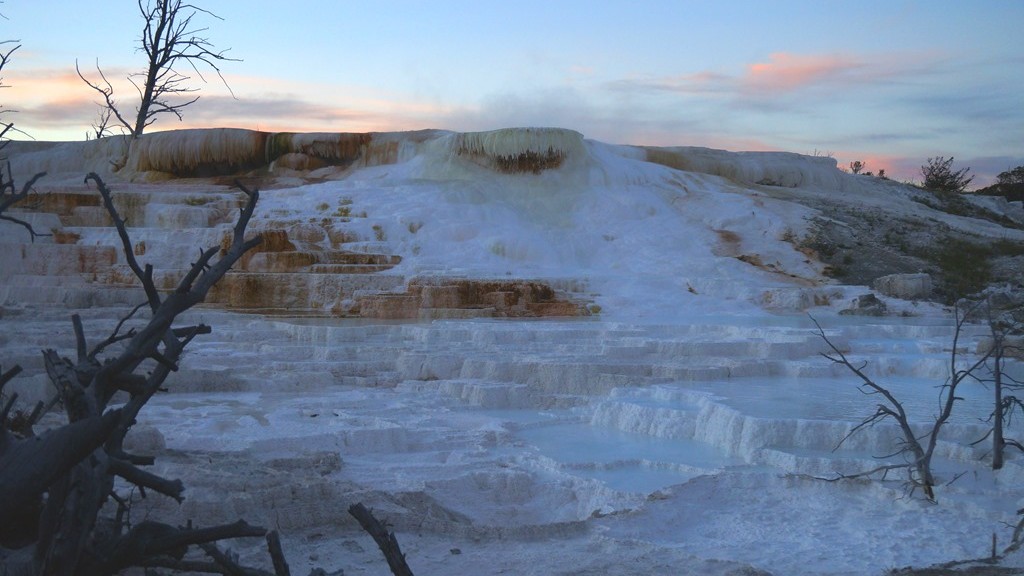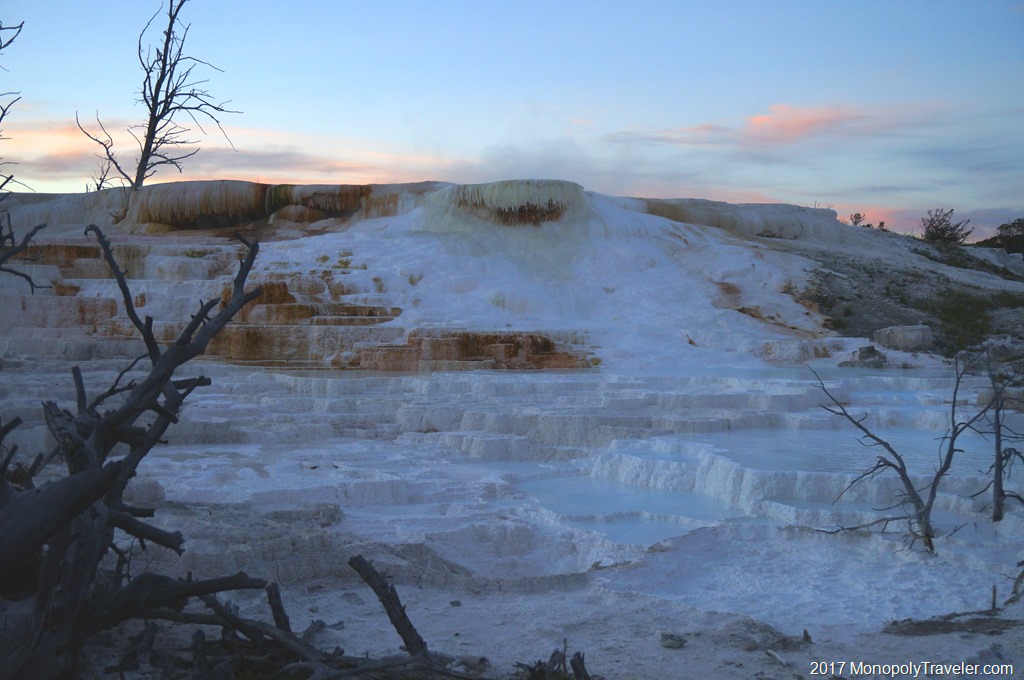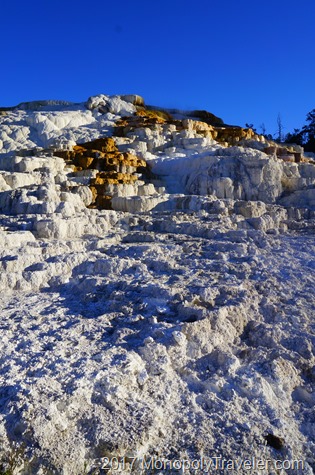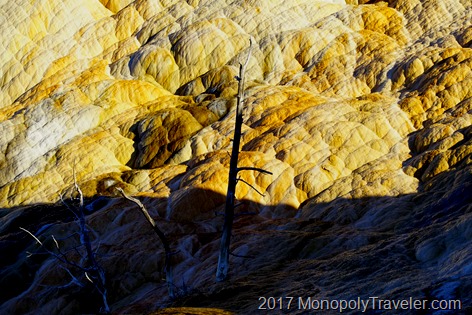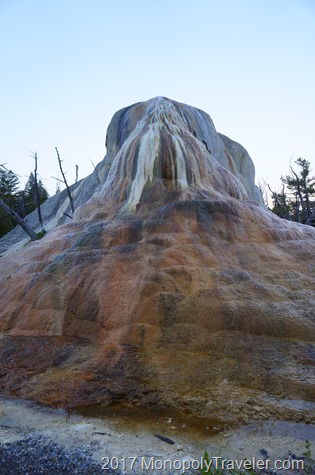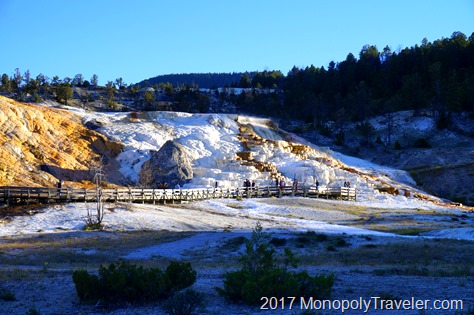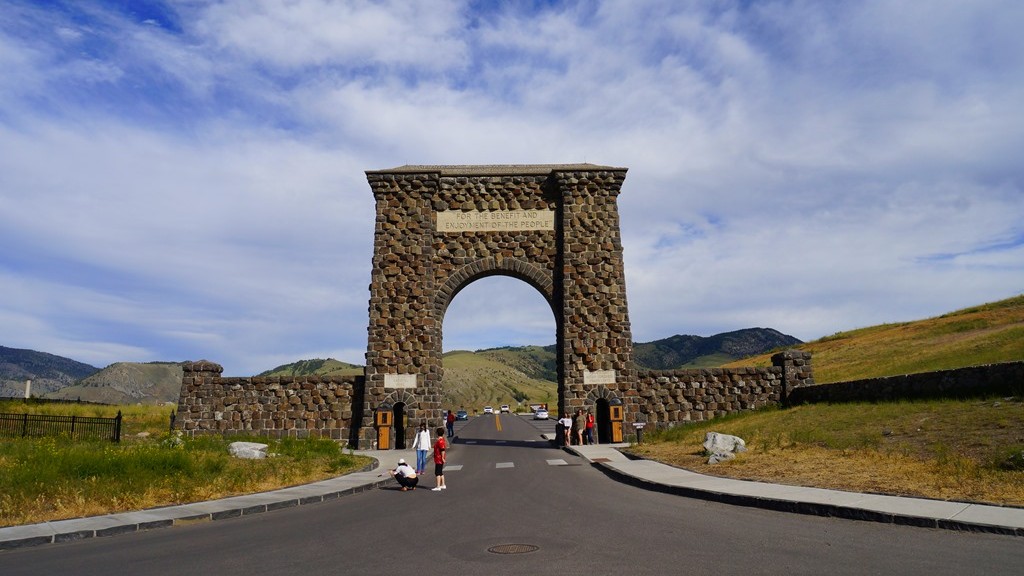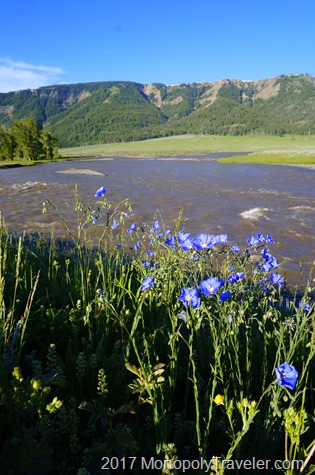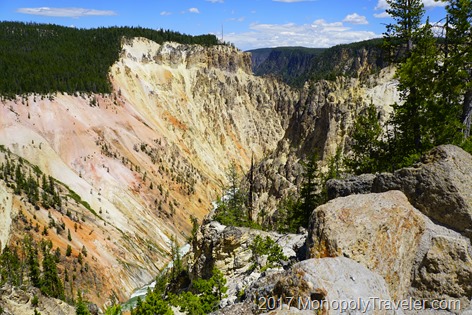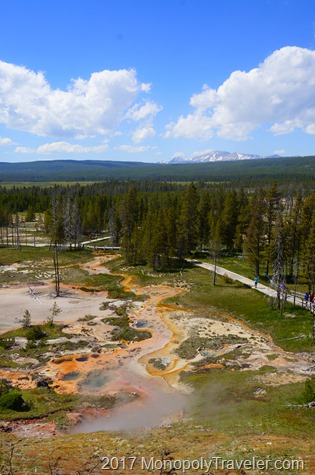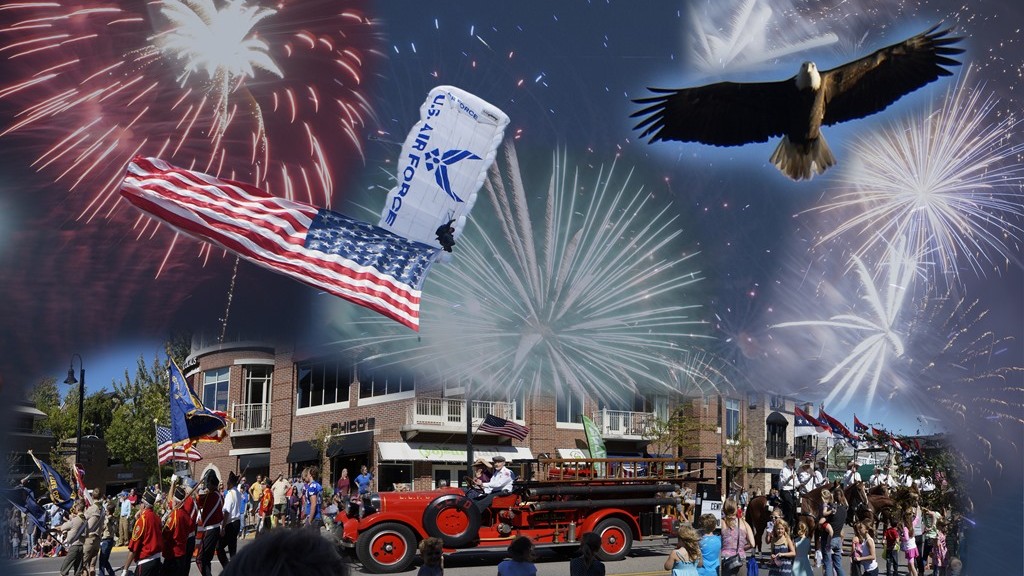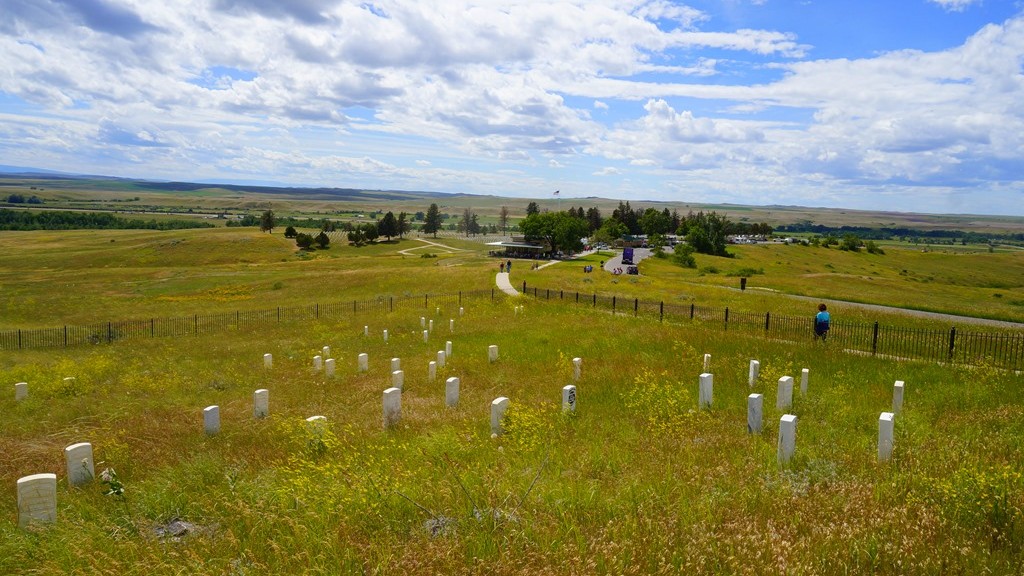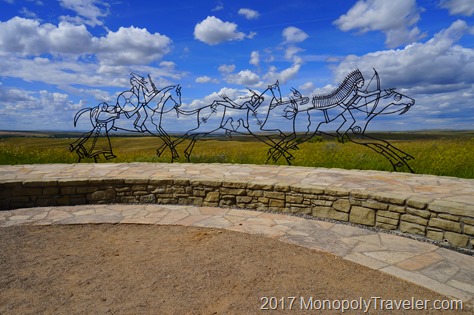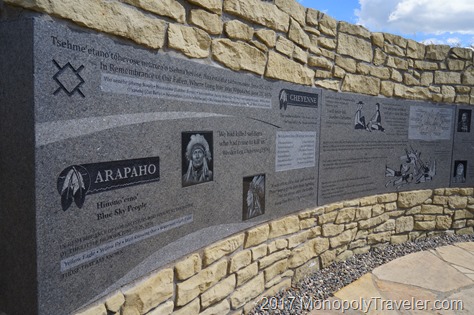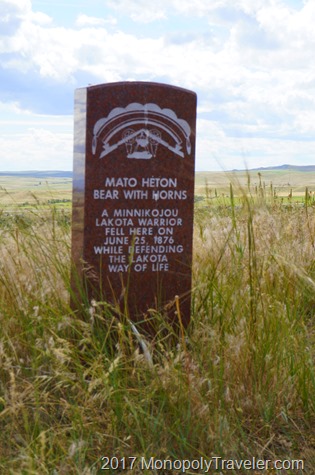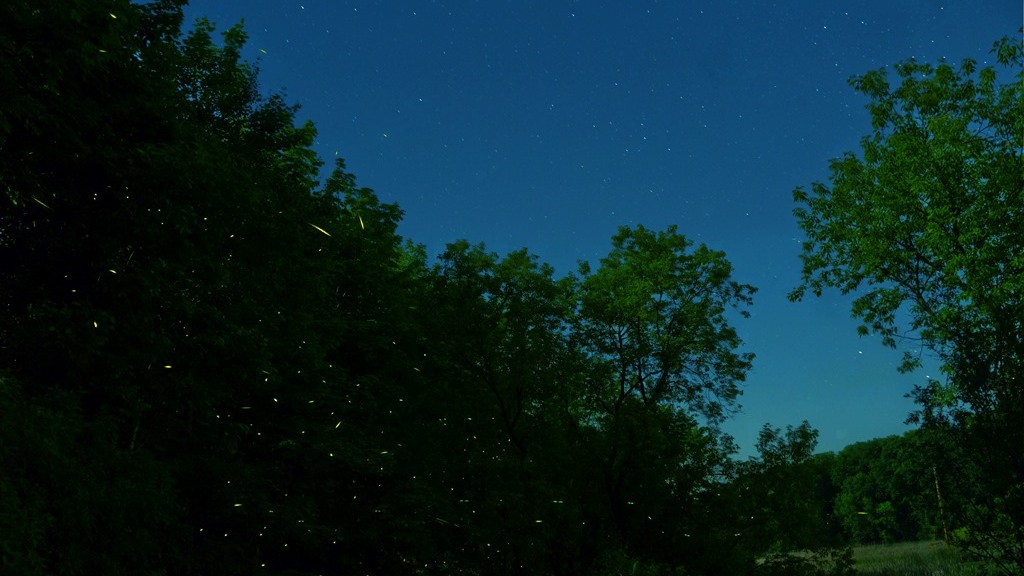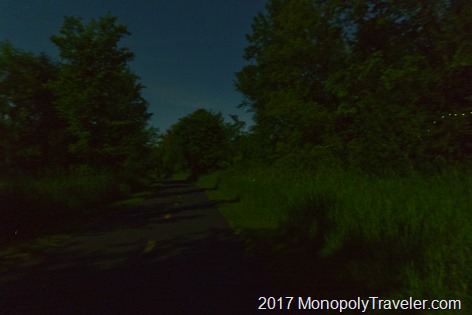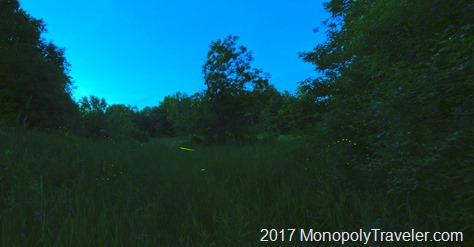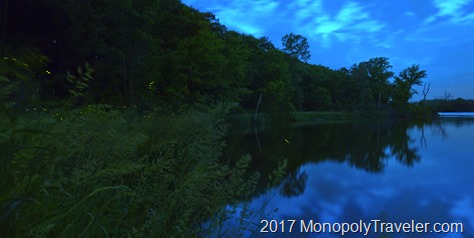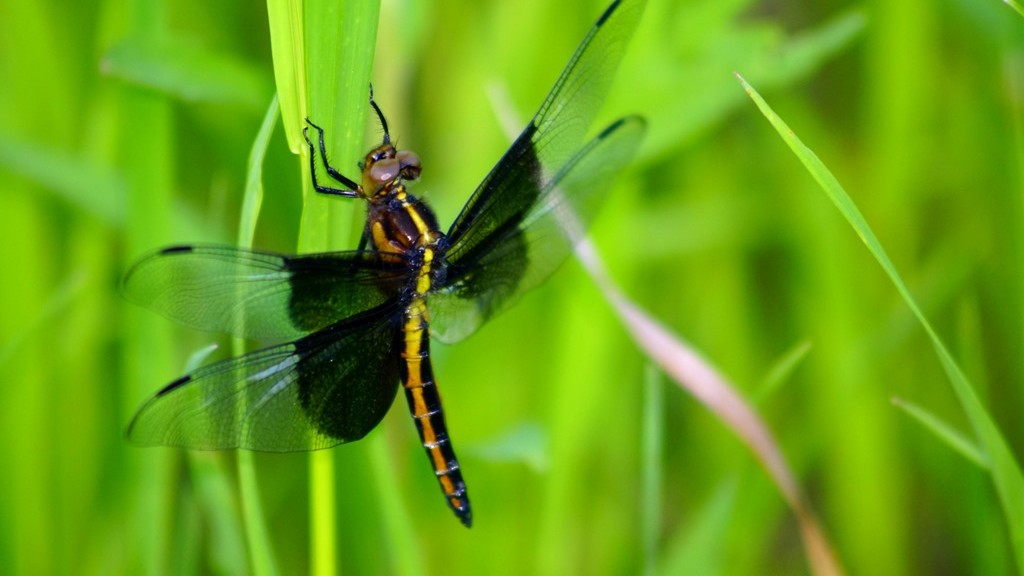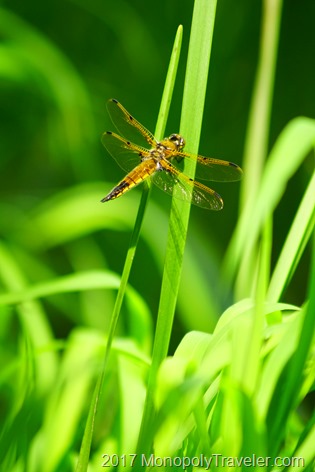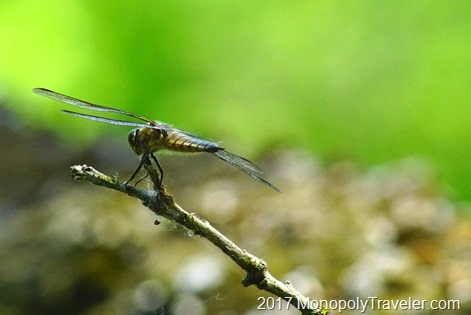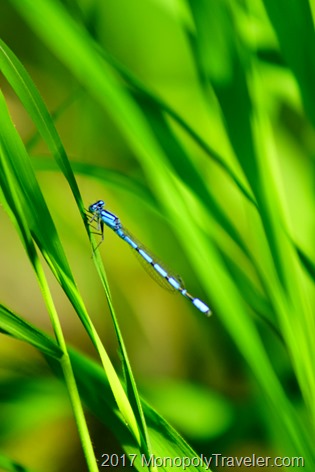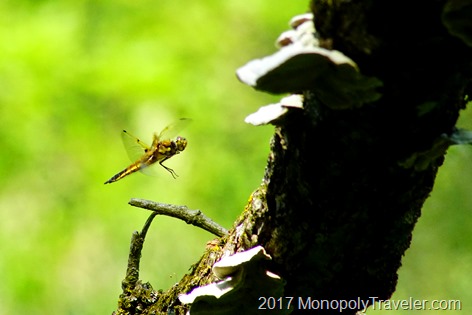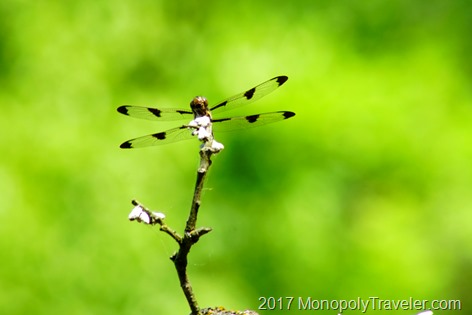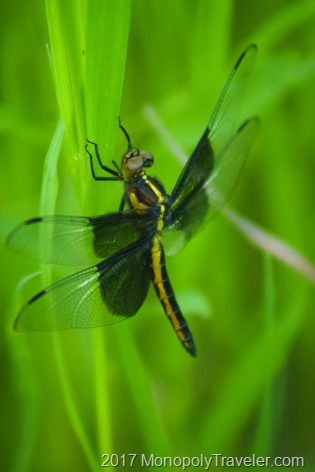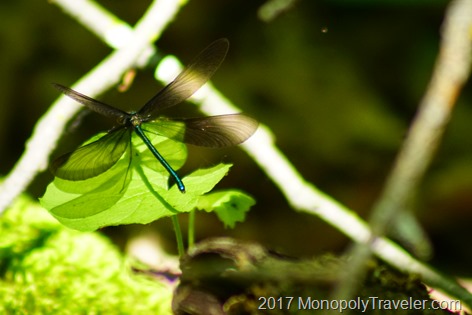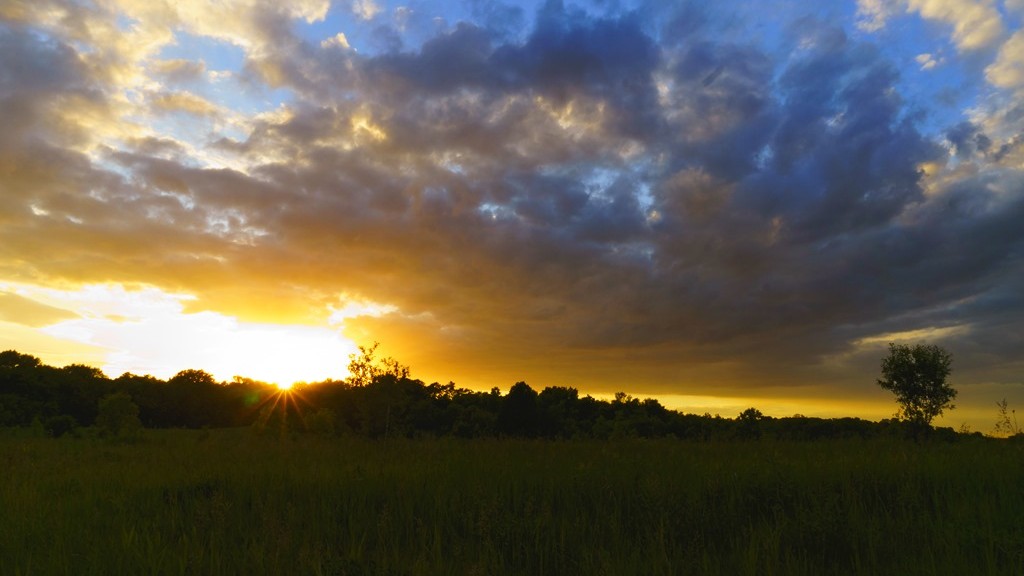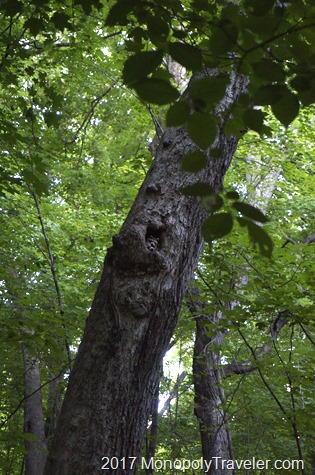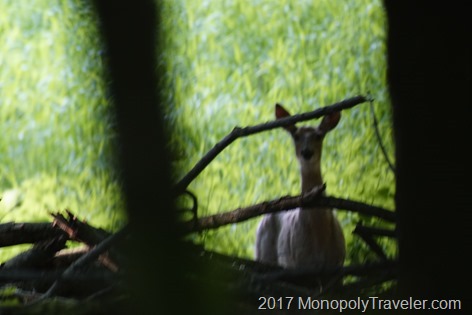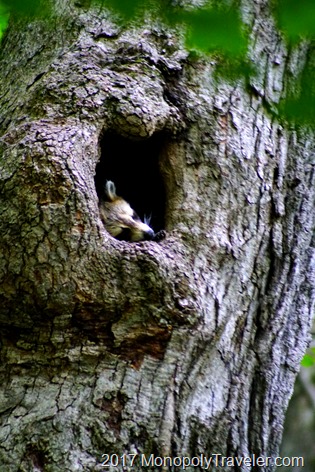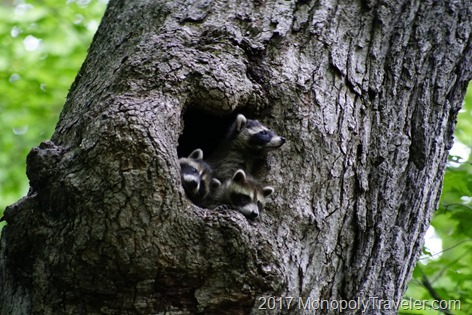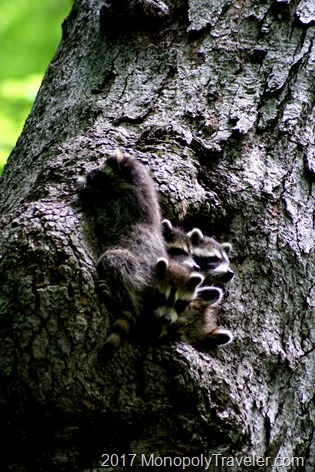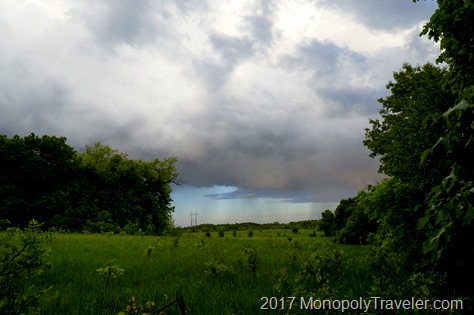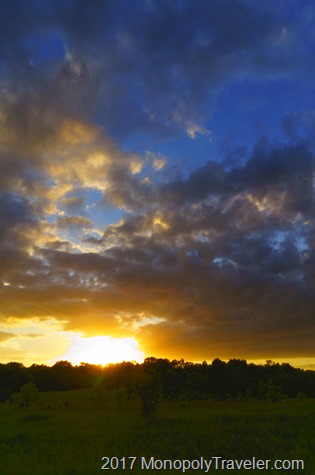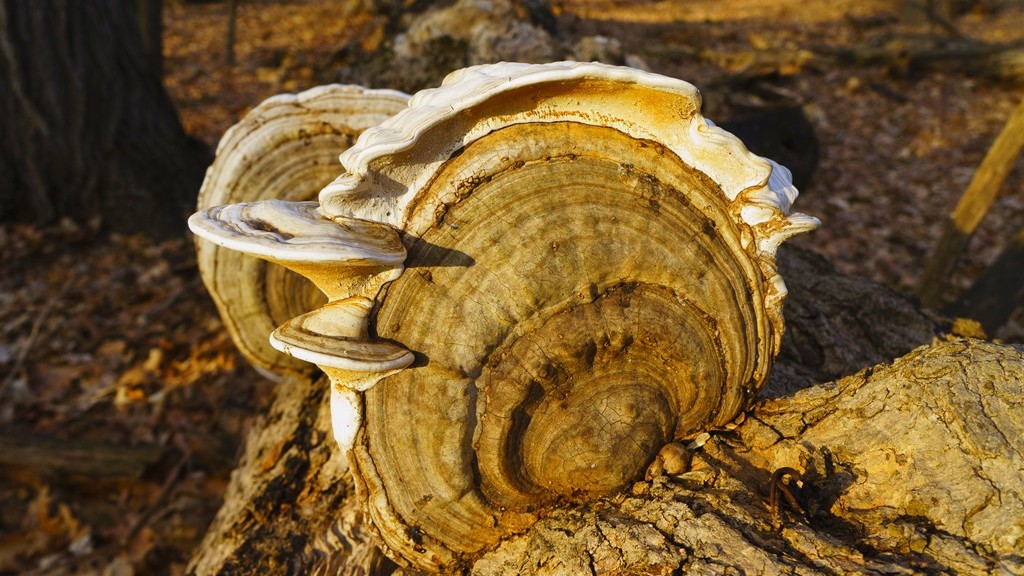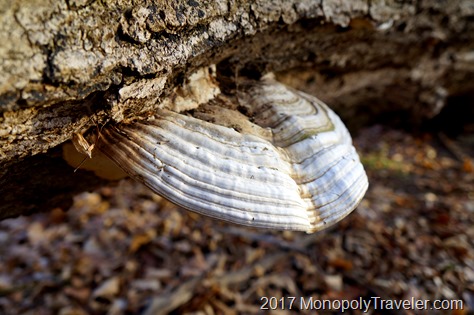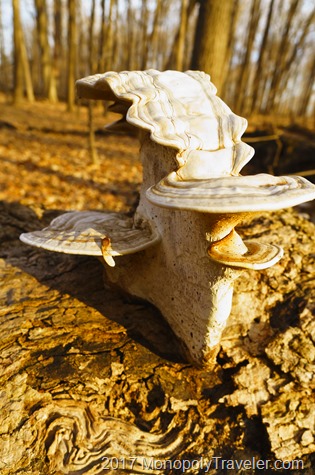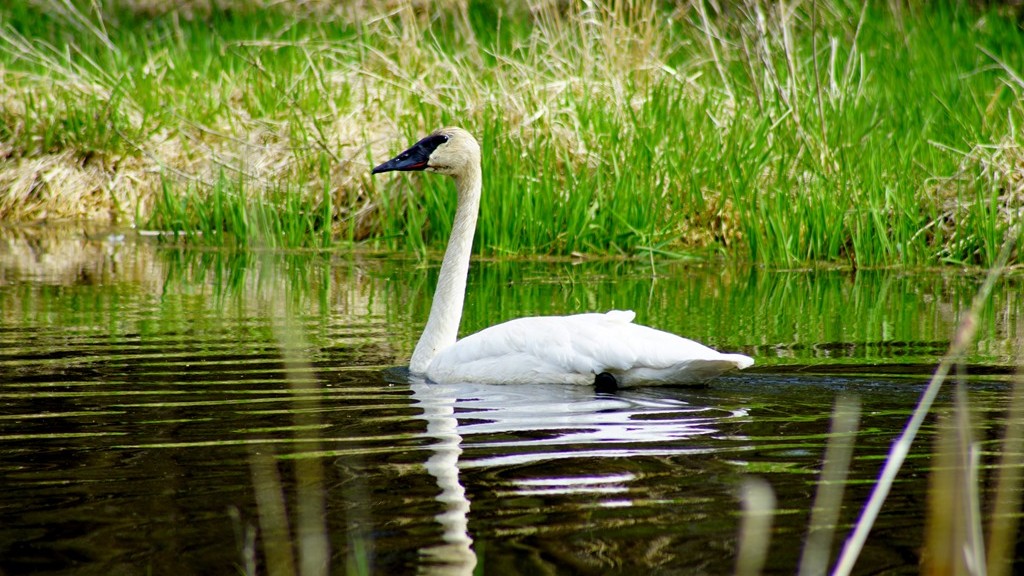With just on hour of daylight left on our first evening in Yellowstone National Park, we took off exploring the several walkways built around Mammoth Hot Spring Terraces. During research ahead of this trip these hot spring terraces weren’t an exciting feature that I was in a hurry to see so this seemed like the right amount of time to quickly explore the area. Upon first viewing these formations I was surprised at how white they were and the formations creating all of these little, unique pools. Something I’ve never seen anywhere before.
Apparently this extreme white comes from calcium being brought up with the springs and deposited as water from these springs cools which means these terraces continually change. This means that the terraces viewed last summer are not the exact same as the ones I saw this summer which will be unique next summer for different visitors. That’s kind of fun. Still, after walking around these features for a little while I felt I’d seen enough to call it a night and return to the hotel for much needed sleep. That’s when the photographer inside of me kicked in.
Shapes, textures, colors, and living and dead trees creating interesting objects began to appear. Yes, they were there the whole time but I didn’t really see them individually. Algae and bacteria living in this hot water add colors to the pure white calcium deposits creating amazing patterns in the terraces. Add to that trees which have been overtaken by these mineral deposits provide another layer of texture to this scene. Soon I realized I could spend a lot of time here catching these items as the light continues to change highlighting different features of each terrace formation ending in beautiful photographs.
Now there wasn’t enough daylight left to capture the Mammoth Hot Springs the way I would like to. As we continued to explore different areas, the springs became more and more fascinating with their little calcium ridges flowing over past living trees turned into decaying artwork and colored different shades of orange and brown as light continued to fade from the almost clear sky. Other areas provided trees a place to grow as a hot spring would become dormant providing more interesting features. With renewed energy it was off to see more areas and discover more of these steam filled deposits creating calm pools of water waiting to cool as they seep from one to another.
Eventually the sky became dark enough to prevent further photographs highlighting these great colors and textures so we returned to our car for the trip to the hotel before crashing into bed for some much desired rest. These Mammoth Hot Springs became more interesting than I would have imagined and every time we passed them on the way to see another location there was a temptation to stop and get more photographs in better light. However that would come at the cost of seeing more of Yellowstone. One advantage to visiting the terraces later in the evening is we really didn’t have to deal with crowds. With this being our first night here it was a false sense of navigating through Yellowstone in mid June. The next day would quickly change this with vastly larger numbers of vehicles and people.

